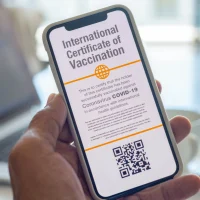The COVID-19 pandemic puts much strain on healthcare resources. One way to expand hospital bed capacity is through the use of telemedicine. Atrium Health's "hospital at home" (AH-HaH) is a good example of how telemedicine programmes can be ramped up to provide acute hospital-level care for patients in their own home.
You might also like:The Inner Workings of a ‘Smart’ Hospital
In this prospective study, researchers described how the virtual hospital programme helped Atrium Health – an integrated health system in southeastern United States with a network of 50 hospitals – provide a reliable care option for patients with COVID-19. By using a hybrid of virtual and in-person services, AH-HaH was able to deliver comprehensive care services to about two thirds of Atrium's COVID-19 patients.
As the coronavirus began to spread in more parts of the country, Atrium opted to launch its home hospitalisation model in March 2020, which was originally set for deployment later in 2020. AH-HaH operates 24/7 through a dedicated virtual care team of providers and nurses, who work with other specialties linked as needed for remote consultations.
The virtual hospital caters to two types of patients based on the level of acuity. A virtual observation unit (VOU) offers proactive home monitoring and hospital-level care for low-acuity patients. Meanwhile, a virtual acute care unit (VACU) is designed for patients who would otherwise have been admitted to a traditional brick-and-mortar hospital. VACU provides inpatient care, such as oxygen, medical treatments, vital sign monitoring, daily virtual physician rounds, twice-daily nursing assessments, and daily paramedic visits.
A clinical triage system – based on two well-known pneumonia severity scoring tools: the modified DSCRB-65 and the American Thoracic Society/Infectious Diseases Society of America Major and Minor Criteria for Severe Pneumonia – is used to help in identifying patients for traditional hospitalisation, VOU, or VACU.
Each COVID-19 positive patient admitted for VACU receives a home monitoring kit that includes a blood pressure cuff, pulse oximeter, and thermometer. After VACU admission, a team of mobile clinicians (paramedics and nurses) visits the patient's home within the first 24 hours. There is also a telemedicine mobile app interface through which patients can escalate their concerns 24 hours a day, e.g. through telephone calls directly to nurses or point-to-point messaging, guided by predefined symptom algorithms with temperature and pulse oximetry cutoffs.
This prospective study covered 1,477 patients diagnosed with COVID-19 from 23 March to 7 May 2020 who received care in either the AH-HaH VOU or VACU or both settings. According to the researchers, only 3% of VOU patients and 13% of VACU patients required admission to a brick-and-mortar hospital.
"In the absence of VACU availability, all 160 VACU patients who did not require transfer to a brick-and-mortar hospital can be viewed by extension as traditional hospital beds saved," the researchers point out. "The AH-HaH maintained a consistent patient census for the first six weeks as COVID-19 cases spread locally, with built-in capacity to expand its census by another 10-fold as a safety net for the system."
In conclusion, the researchers say that a virtual hospital can be a viable part of a health system's surge planning, providing additional inpatient capacity during the COVID-19 pandemic and beyond. In addition, home hospitalisation models offer an important alternative strategy to care for patients infected with COVID-19 by mitigating some risks associated with traditional inpatient management.










